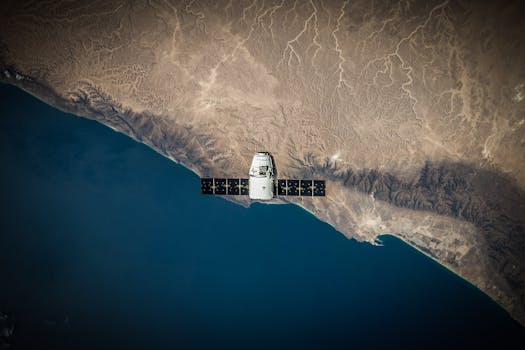
Breaking Barriers: How Recent Developments are Transforming Satellite Communication
Breaking Barriers: How Recent Developments are Transforming Satellite Communication. The field of satellite communication has undergone significant transformations in recent years, driven by advancements in space technology and the increasing demand for global connectivity. As the world becomes more interconnected, the need for reliable and efficient communication systems has never been more pressing. In this article, we will explore the recent developments that are breaking barriers in satellite communication and shaping the future of the industry.
The development of new satellite constellations, such as OneWeb and Starlink, has been a major breakthrough in satellite communication. These constellations consist of thousands of small satellites that orbit the Earth at low altitudes, providing high-speed internet connectivity to remote and underserved areas. The use of low-Earth orbit (LEO) satellites has significantly reduced latency and increased the speed of data transmission, making it possible to support real-time applications such as video streaming and online gaming.
Another significant development in satellite communication is the use of advanced propulsion systems. Traditional satellite propulsion systems rely on chemical fuels, which are heavy and inefficient. However, new technologies such as electric propulsion and advanced ion engines are being developed, which offer greater efficiency and maneuverability. These systems enable satellites to maintain their position and altitude with greater precision, reducing the risk of collisions and increasing their operational lifespan.
The increasing use of satellite communication in the aerospace industry is also driving innovation. As space agencies and private companies such as SpaceX and Blue Origin push the boundaries of space exploration, the need for reliable and efficient communication systems has become more critical. The development of new satellite technologies, such as satellite-based navigation and communication systems, is playing a crucial role in supporting these missions.
The Impact of Satellite Communication on Global Connectivity

The impact of satellite communication on global connectivity cannot be overstated. Satellite communication systems are providing internet access to remote and underserved communities, bridging the digital divide and supporting economic development. The use of satellite communication is also enabling the creation of new industries and services, such as precision agriculture and remote healthcare.
The use of satellite communication in emergency response situations is also critical. In the event of a natural disaster, satellite communication systems can provide vital connectivity, enabling emergency responders to coordinate their efforts and provide critical services. The use of satellite communication is also supporting the development of smart cities, enabling the creation of intelligent transportation systems and energy management systems.
The Future of Satellite Communication

The future of satellite communication is exciting and rapidly evolving. As new technologies and innovations emerge, we can expect to see significant advancements in the field. The development of quantum satellite communication, which uses quantum entanglement to secure data transmission, is a promising area of research. The use of artificial intelligence and machine learning is also being explored, enabling the creation of more efficient and autonomous satellite systems.
In conclusion, recent developments in satellite communication are breaking barriers and transforming the industry. The use of new satellite constellations, advanced propulsion systems, and innovative technologies is driving innovation and supporting global connectivity. As the demand for reliable and efficient communication systems continues to grow, the future of satellite communication looks bright.
See more:

